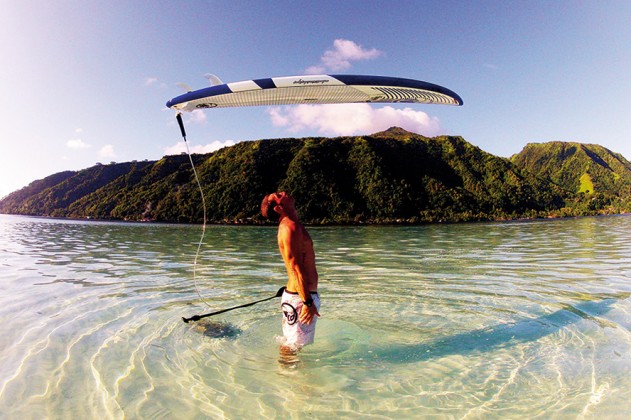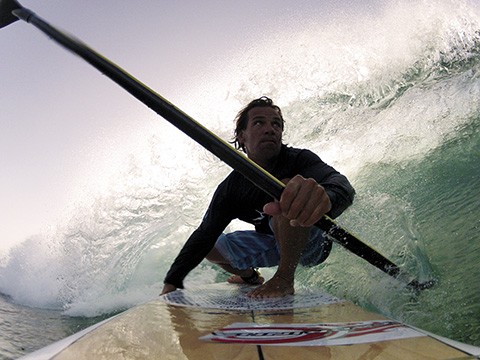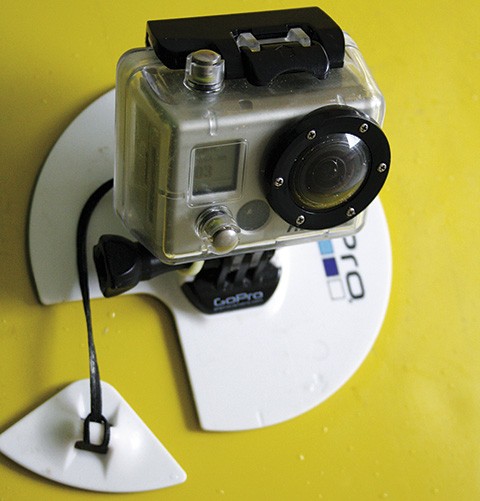The biggest thing in recent years to change the way we quite literally see ourselves is the hands-free waterproof camera. The use of these devices in board sports is endemic and we’re producing our own mounts and ways of shooting to create images that were previously impossible, or prohibitively expensive. As with most things tech, these cameras work straight out of the box with satisfactory results but with a little thought you can turn out some kick-ass media. We consulted two self-shooting heavy-weights, Wes Matweyew and Mateo Fouliard, for advice on nailing that above-the-mantelpiece keeper.
Words Dom Moore // Photos as credited
(This feature originally appeared in the Summer 2012 issue of SUP International. Print and digital subscriptions for readers worldwide are available HERE.)
The Specs Race
The playing field is overall fairly even amongst most current cams, with all offering whopping still photo megapixel counts and HD video recording. However, don’t expect a sub £300 cam boasting 11 megapixels to wipe the floor with your 8mp DSLR when it comes to images quality. Without getting too deep, a lot has to do with the sensor in the camera and a DSLR will stomp a hands-free cam any day of the week. But amongst cams in this field, you can expect a higher megapixel count to give you a better photo.
HD video recording will be standard on any current cam, with all models offering varying degrees of quality depending on file size and frame rate. At the top end you’ll find HD 1080p which means the video signal contains 1080 horizontal lines of vertical resolution (the ‘p’ stands for progressive scan, as opposed to ‘i’ for older fashioned interlaced video, it’s just better). Next, there’s HD 720p, and then it drops down to WVGA (wide video graphics array) with a resolution of 480. Now, there is really only one reason why you’d want to shoot in a lower quality format, and that is to increase frame rate, more on that in a moment. If you need to shoot in lower quality to save space, just buy a good memory card fer Chrisakes.
The Activist: Wes’s tips
- I’m on my 9th cam in 3 years. They have all been lost, drowned or killed in dramatic fashion, and it’s all been my fault.
- Board, paddle, leash, sunscreen, wetsuit and camera are essential equipment, it’s your own personal black box..yep, tiger shark got him!
- Clean your lenses, inside of the case, outside of the case and the cam inside. In the water, spit on your fingers and rub it on your lens, rinse it at the last sec to combat water drops on the lens.
- I use the one button mode for most surf shots or situations where it seems to fog up, the camera heats up less and I shut it down when I pull out. It will cool down on the paddle back out.
- Write your contact info and “reward if found” inside or outside the battery cover. And use the floats!
- Do switch your mounts and angles. Run a board mount or two, a paddle mount along with helmet or chest while switching between them. This will give you a few options without going back to the beach.
- Leave your camera at home to get the best sessions; I dunno, it just works that way.
- Great white are attracted to the electrical beep from the go-pro camera and can hear it up to twenty six miles away. Disable that feature when cold water surfing or keep your camera running at all times. We don’t want to miss that.
- Turn off the red lights on your camera when filming your sexcapades so your girlfriend doesn’t know the camera’s on and filming.
- Do not attach your camera to a wild turtle they swim a lot faster than you think…
Video Frame Rate
Thomas Edison (inventor of light bulbs and record players) said “anything less than 46 frames per second will strain the eye”. He’s probably right but we can drop down to 30 frames per second without much bother, which is a good thing since that’s the standard rate for HD 1080p. If however, you want to slow your video playback speed down using editing software to give extra emphasis on a trick or smack of the lip, you’ll need to increase the frame rate you’re recording in because slowing down to less than 30 frames per second will produce a jerky juddery vid.
Not all cameras offer this option, so you need to look for one that can shoot in 60 frames per second or even 120 fps. The equation is simple: if you want your video to play back at half speed and maintain smooth playback at 30fps, you need to shoot in 60fps. If you want to slow it down to quarter speed for that hanging around in space feel, you’ll have to shoot in 120fps. Since these cameras are at the budget end of the scale and not much bigger than a packet of fags (I don’t smoke and neither should you but I’m assured this is quite a compact size) there needs to be a compromise, and that will be the video resolution. At 60fps you’ll still be shooting in HD 720p, but 120fps will slap you back down into WVGA 480 mode. If you’re seeking to make a video for anything other than internet broadcasting, WVGA might be too low rez.
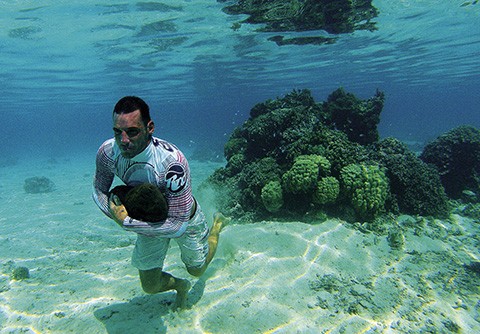
The Creativist: Mateo’s tips
As soon as I got a GoPro in my hands, I understood this magic video camera would be of great help for my career as a pro rider. Like most people, I started out with the original Hero, and after losing more than 10 of those in the waves, I now have a whole stock of Hero2’s.
- The funny thing is, I’m really not that good with other types of cameras. But there’s something about the GoPro that makes it really versatile and easy to use: you can place it pretty much everywhere on your equipment and get some great shots - on your kite, your stand-up paddle, yourwindsurf. Even the most simple lifestyle shots turn out amazing.
- I now ride for RRD and as a free rider it is my job to get the best, most original shots wherever I travel, making sure the equipment I use gets the right exposure.
- As you can see in my shots, I work by myself and that’s why good planning is key in getting a great photo. I’ve also spent a lot of time getting advice from pro photographers like Tim McKenna and Benjamin Thouard. They taught me a lot about proper lighting and background, depending on the result I want to get.
- For instance, you can take great outdoor photos in the morning, but it’s always better to wait early in the afternoon for underwater shots, when the sun is at its zenith, thus giving you maximum light.
- But don’t get me wrong, the GoPro doesn’t do everything. To get great shots, you also have to be a little bit of a born artist…
Photo Time Lapse
Among the still photo modes that are standard across these cameras (one shot, timer, burst), there is one that stands out for true hands-free performance that paddlers require and that’s time lapse, or continuous. Time lapse mode allows the camera to keep taking photos at pre-set intervals between 60 and 0.5 seconds depending on the model. Naturally the shorter the time interval between photos, the greater chance you have of catching the apex of a move or a killer shot with the light and background just right. The only downside (and in my opinion it’s a minor one) is that you’ll have hundreds and hundreds of photos to sift through to find the gold. Burst mode will come in handy if you want to grab a shot or sequence of your mate riding by. Because of the shutter lag these cameras have in one-shot mode, you’re likely to miss the killer move. Firing off a burst of ten shots should give the results you need.
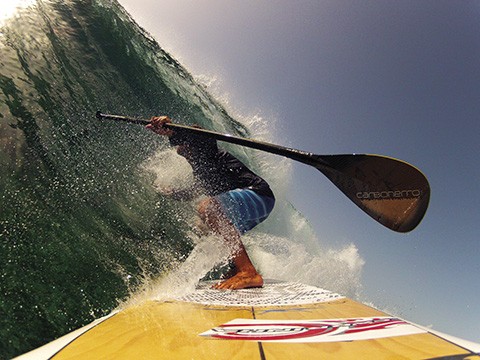
Advanced Tech
Many hands-free devices allow you to update the ‘firmware’, or operating software. Updates can bring improvements such as faster shutter speeds, reduced time-lapse intervals and increased frame rates. Ports on the cameras let you fit expansion packs for LCD screens, wifi and remote control functionality.
In the age of the smartphone app, no piece of tech is complete without the ability to integrate with your device. Android and iPhone apps let you remotely control your cam and see what you’re filming. You can also check the memory and battery status, and if your cam is so equipped, your GPS info. Naturally for
SUP use you’d need to slip your phone into a waterproof bag. SUP
“ Leave your camera at home to get the best sessions; I dunno why, it just works that way ” Wes Matweyew
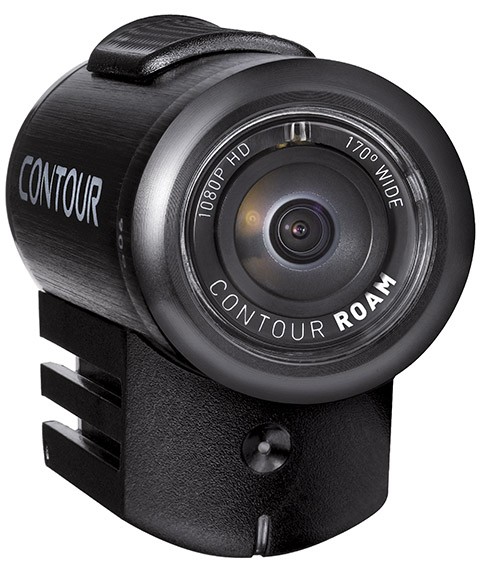
Contour
Roam
RRP £199.99
ultrasporteu.com
The Contour Roam is a new player in the market with a rotating lens, and once mounted you can rotate the lens and level your shot using the built in laser line. It’s fully mountable with a wide angle 170° F2.8 lens and can shoot 1080p HD wide angle from a smooth, flush-front housing.

Drift HD
Action Camera
RRP £249.99 Inc. VAT
driftinnovation.com
A new compact, durable, easy-to-use HD camera. With full HD video for creating crystal clear footage, and a rotatable, replaceable lens and 9MP still photography – put it in the photo burst mode and you can take pictures every few seconds for as long as your memory card and battery lasts.
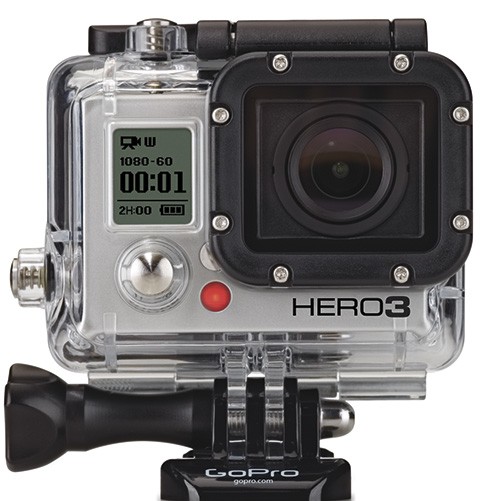
Go Pro
HD Hero2
RRP £299.99
madison.co.uk/gopro
The original… GoPro cameras are used by more pro surfers, surf filmmakers and stoked enthusiasts than any other camera in the world. The HD HERO2: Surf Edition is the most advanced GoPro camera yet. Wearable and surfboard mountable, waterproof to 60m and capable of capturing professional full 170° wide angle 1080p video and 11 megapixel photos.
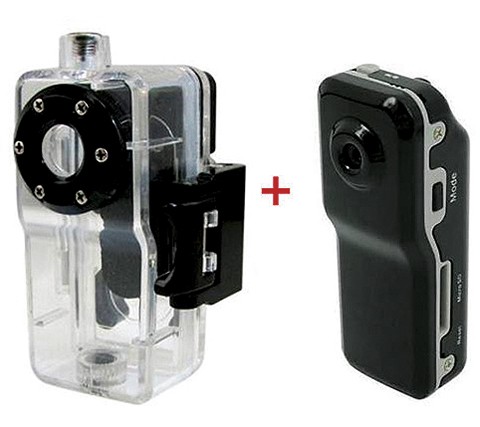
Mini DV Camera
RRP £55 (plus P&P)
epicsurf.co.nz
A super cool, super small audio and video camera with sound activated recording and two hours shooting time on a charge. The Mini DV features high speed recording and quick light response, low illumination, high res images with 2000 pixels, 30 frames per second and works with Micro SD or TF card.

